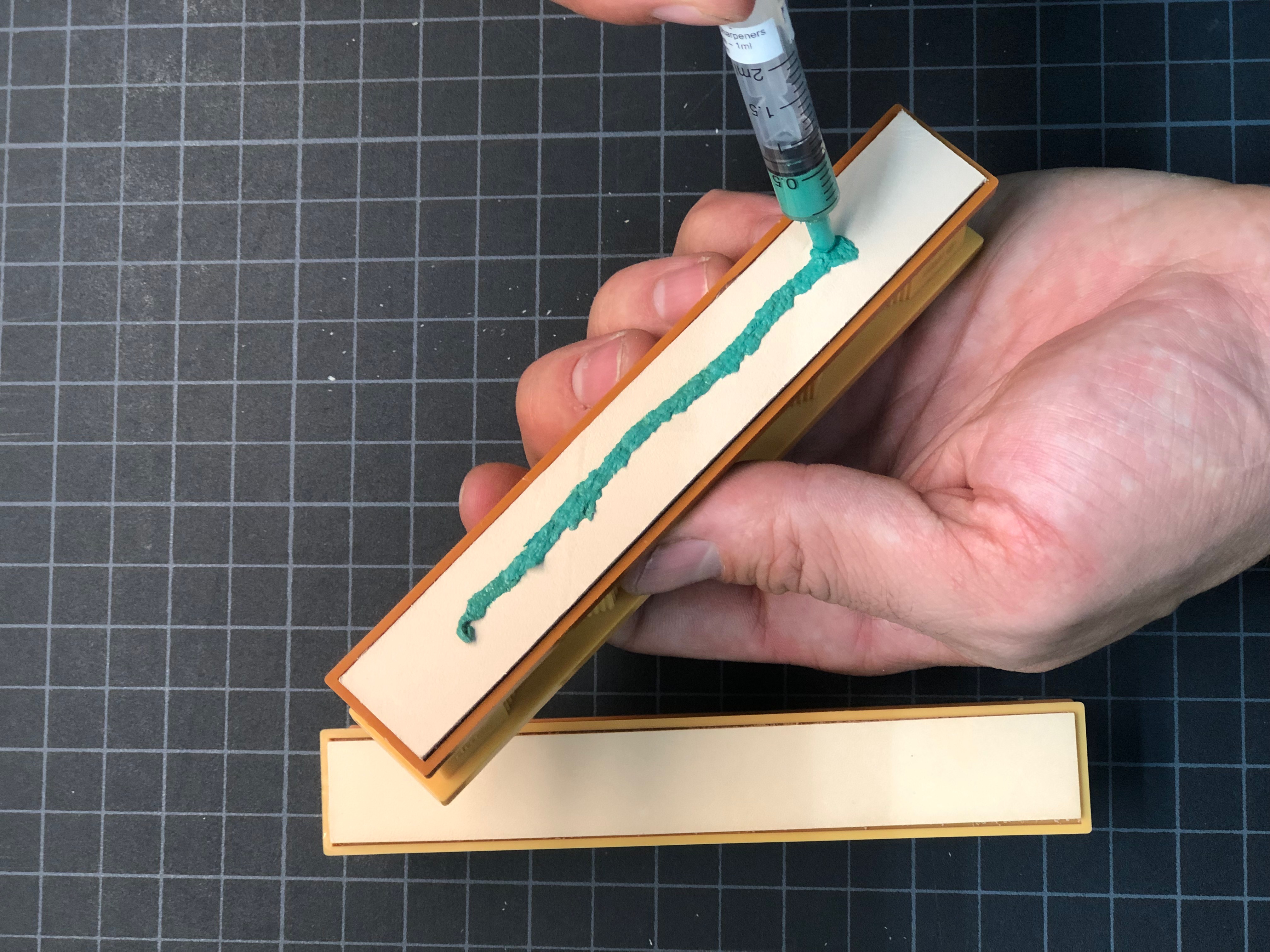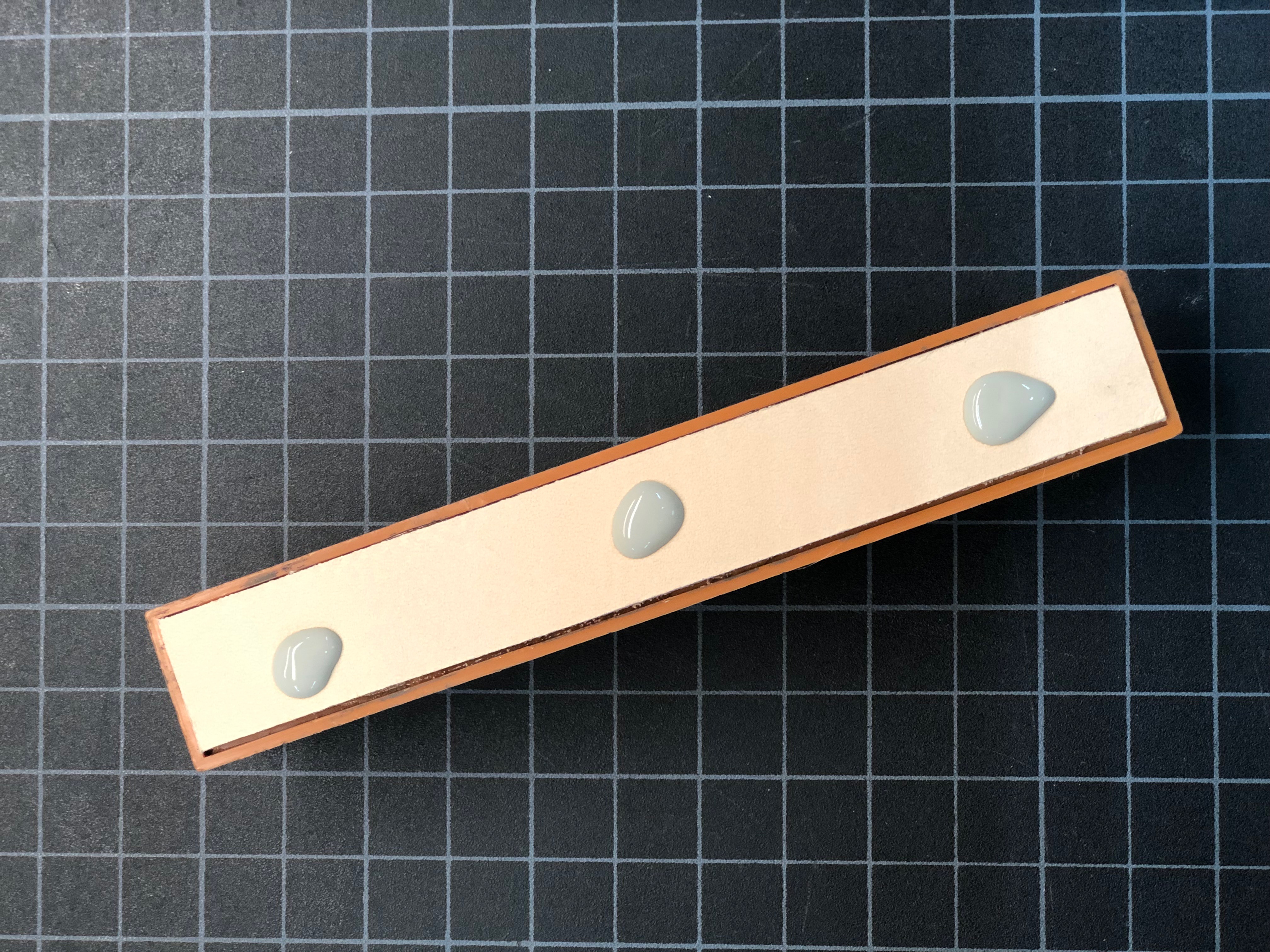The How, Why, and When of Stropping
There are a couple of reasons why you would want to use a strop and what's the difference between compounds we offer.
Strops are great for a couple of reasons:
- They provide a more durable edge. The soft leather slightly rounds the bevels, providing more material for the edge to push against and helps prevent rolling and dulling for longer
- They put on a beautiful polish by buffing out any scratches left behind from coarser grits
- They refine the edge by removing micro-serrations, perfect for straight razors and a knife that you need to make extremely clean cuts
Pastes vs Emulsions
- The emulsions, while more expensive, have more diamond particles in them meaning they work significantly faster than the pastes
- Pastes, while more affordable, take longer to get the end result
- Both get you the exact same result, it's just a matter of how much time you want it to take to get to the finish
Tips for using your strops:
- Our strops are marked in microns, meaning that the higher the number, the coarser it is. So 4 micron is coarser than the 2
- Work cleanly. The strops are very susceptible to cross contamination and will soak in any grit or debris that you haven't cleaned off your blade or work station
- A little compound goes a long way and some rubbing alcohol (70% is perfect) will wake dried compound back up
- You want your strops to 'stick' to the blade. If they're not sticky, spray with a little rubbing alcohol or apply some fresh compound
- Drop you angle when stropping by 1 to 2 degrees. If you sharpened at 20 degrees, lower to 19 or 18 so you don't round that beautiful edge
- Use edge trailing strokes (up and away) to prevent cutting into your strops
Preparation - Applying the diamond paste to the strops
Always start with clean hands and a clean working surface when handling your strops to prevent contamination of the surfaces. Remove the strops and the syringes of diamond paste from their packaging. The strops are mounted to the handles and the handles are labeled with the correct grit number. In some cases, the handles are labeled Coarse/Fine. The syringes are labeled with their grit number. Compare the number on the syringe to the number on the handle in order to apply the paste to the correct side of each handle. If the handles are marked Coarse/Fine, apply the higher numbered grit to the side labeled Coarse and the lower numbered grit to the side labeled Fine.
Start by applying the lower numbered, finer grit by squeezing a thin line of paste along the length of the strip on each strop or 3 dollops of the emulsions. (Paste)
(Paste)  (Emulsion)
(Emulsion)
Rub the corresponding strops together to work the paste into the strip. The entire syringe is not meant to be used at one time. A small amount goes a long way and an excessive amount of diamond paste will result in a gunky surface that will be messy and difficult to work with.
Tip: Fill an empty spray bottle with isopropyl rubbing alcohol and lightly mist the surface of the strop after applying the paste and before rubbing the strops together. The paste will work in more easily and less residue will be left on the blade during stropping.
Using your strops
After completing sharpening with the stones, clean the blade thoroughly to remove any metal filings or other contaminants from the surface before starting with your strops. Exercise caution so as not to cut yourself. Start with the coarser, higher numbered grit and strop your knife using a slower up-and-away stroke. Be very careful not to slide the strops down into the blade as this will cause the knife to cut into the strip. Be sure to clean the blade again before switching to a different grit to prevent cross contamination.
Tip: Lower the sharpening angle by 1-2 degrees for stropping to maintain the original sharpening angle.
Tip: Lightly mist the surface of the strip with rubbing alcohol before stropping.
Care and maintenance of your strops
Always wipe the steel filings off of the blade you have just sharpened before using the strops. Failure to do so will result in contamination of your strops with these steel filings, which can significantly reduce their performance. Be sure to store them in a clean location and in a manner that prevents cross-contamination, such as in separate plastic bags.
If you have any questions about this process, feel free to contact us at support@wickededgeusa.com.
Related Articles
What Materials Does Wicked Edge Use in Their Products?
Sharpeners, Attachments, and Adapters: We utilize 6061T6 aluminum and stainless steel for sharpener and adapters. Certain, non-load bearing parts on the 60 Series sharpeners are machined with Delrin to reduce friction and provide smoother movement. ...Wicked Edge Obsidian - WE66 Knife Sharpener Instructions
Instructions for WE66 Obsidian Sharpener WE66 Obsidian Set Up Sharpening Safety Mounting the Knife Finding the Angle and Sweet Spot Sharpening Motion Creating a Burr Sharpening a Knife Touching Up Your Knives How to Sharpen the Practice KnifeWicked Edge Low Angle Adapter instructions
Before you get started, it’s important to note that the when the Low Angle Adapter is installed on your sharpener, all the sharpening geometry will change and the angle markings on your sharpener will no longer be accurate. For instance, if your ...Wicked Edge Cobalt - WE64 Knife Sharpener instructions
Watch the playlist below for instructions on how to set up and use your Wicked Edge Cobalt WE64 knife sharpener. WE64 instructions 01 Setup WE64 Instructions 02 Safety WE64 Instructions 03 Mounting The Knife WE64 Instructions 04 How to Find Your ...Instructions for Installing Your Generation 3 V2 Upgrade Jaws for 1/4" Blades
Instructions for Installing Your Generation 3 V2 Upgrade Jaws for 1/4" Blades. These jaws are designed to work with the Cam-Lock Vise. If you have a Generation 3 Pro, WE130 or have upgraded another model to have the Cam-Lock Vise, these jaws will fit ...